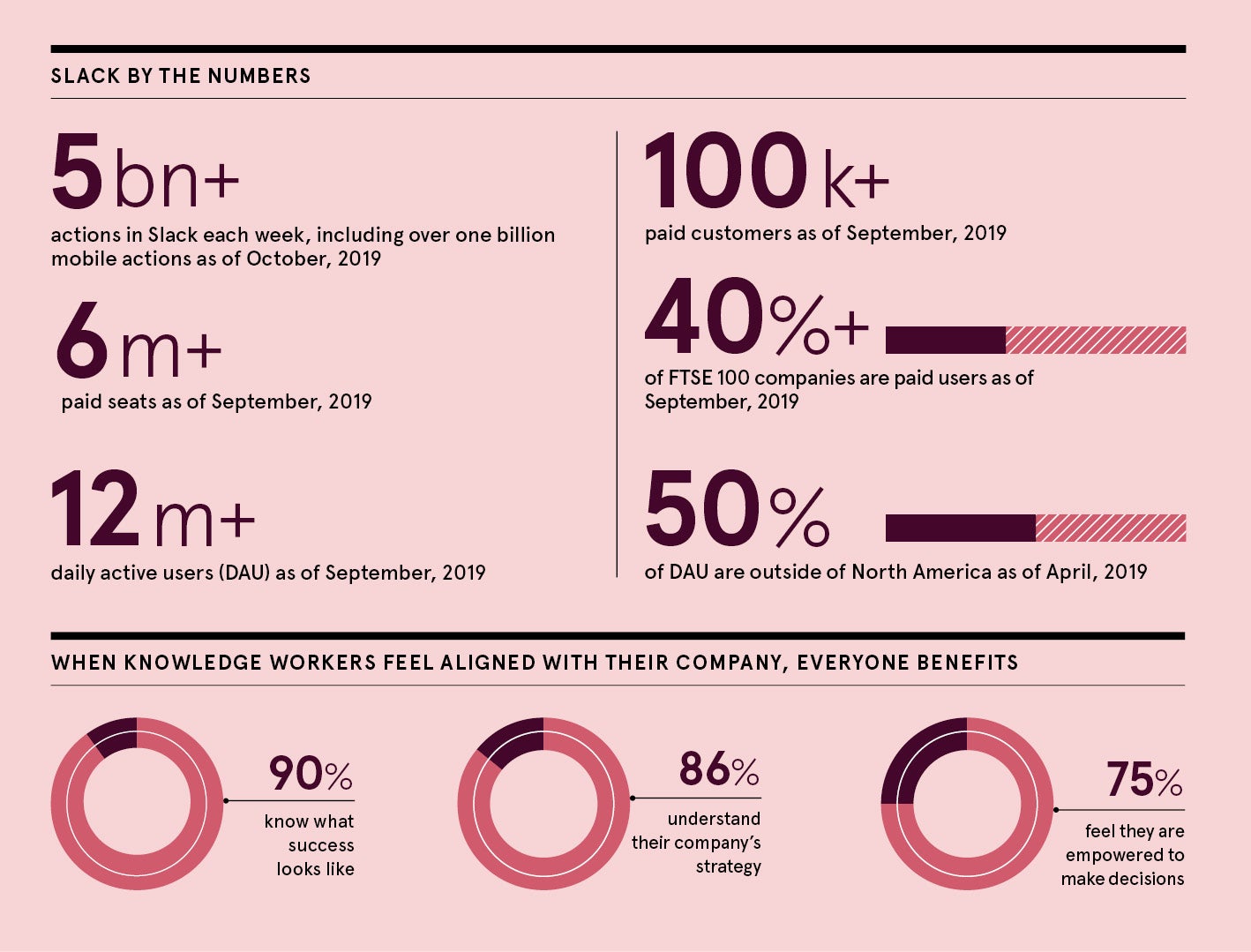Email is broken. Inboxes have become to-do lists, where the work you do and the information you see is determined by the person sending you the message. In an age where nearly every element of our work involves some aspect of teamwork, this 40-year-old technology no longer fits.
Consider your personal life. If you have young children, you’re constantly organising school trips, family outings and plans. Where do you do this? In WhatsApp groups, with relevant people who can respond in real time. The idea of trying to do this by email is no longer viable and we’re seeing the same shift at a business level.
Instead of an indiscriminate push of information, we need a controlled pull, where employees have access to, and the ability to search for, the information they need
The same efficiencies, improvements and time-saving tools we use in our private lives are now being applied to our working lives, and they are allowing organisations to tackle the fundamental challenge of co-ordination and alignment.
Email is the default co-ordinating point for communications, but inside a company it works poorly. Enormous flows of information course through it, but each person has only a tiny view. Email holds rich history: all the decisions made, questions answered and information shared, but if you’re new to a company, or just in the wrong inbox, you have access to none of it.
Scaling knowledge
This is why instead of an indiscriminate push of information, we need a controlled pull, where employees have access to, and the ability to search for, the information they need.
We believe Slack is leading a paradigm shift in communication, moving organisations from individual to team-based communication, organising messages by channels rather than inboxes. Channels can correspond to anything: projects, teams, planning, office locations, business units or functional areas.
Instead of everyone having their distinct, partial, fragmented view of information, Slack creates a rich, permanent, searchable record of knowledge for your organisation, giving control back to employees and creating an environment that supports increased competitiveness and innovation.
Take a new starter in an email-based company. When they join, their email folder is empty. Their boss might send them a few emails with things to look at, but essentially they are out of the loop and beholden to the boss for information.
In channel-based communication such as Slack, the new starter is immediately part of all knowledge streams in a company. They can join a project, search for it on Slack and get information on the project from its beginning. In an age of intensifying global competition, the ability to make better use of historic knowledge within an organisation is critical in enabling agile, fast-moving companies that iterate and innovate quickly.
The intellectual property of successful businesses sits in the communication between its employees, rather than in carefully crafted documents sitting in hidden folders. The future of work is about collaboration across departments at speed, rather than silos and hierarchies.
Email’s formal style – “Dear xxx, …yours sincerely” – is not conducive to agile communication or innovation.
A messaging platform is much quicker and much less formal, breaking down barriers between different departments and reducing the time needed to collaborate.
Collaborative work is agile. For successful companies, the old school, top-down method of managers telling employees what to do no longer works. Instead, modern business leaders drive accountability and engagement by allowing employees to take control of developing the business with their own expertise.
Why is this important?
It’s not just collaboration that is key to the future of work. Slack’s 2019 State of Work report surveyed 17,000 knowledge workers across ten countries to understand the major shifts in modern work. We found a direct correlation between how employees feel about their own productivity and how well they are aligned to both a company’s overall objectives and their own colleagues.
For example, when workers understood their company’s strategic goals, 84 per cent said they felt aligned to the business and 88 per cent knew how their day-to-day work contributed to the success of the organisation. On the flip side, when employees were unsure about their company’s goals, only a third (33 per cent) understood how their work contributed to business success.

This lack of clarity has a knock-on effect on growth and productivity. Three quarters of aligned workers said they felt empowered to make strategic decisions and pursue new business, with fewer than a quarter (22 per cent) of unaligned employees agreeing. Significantly, unaligned workers were 12 times more likely to rate morale and satisfaction as very poor than aligned workers.
While there is no one-size-fits-all solution to creating an aligned workforce, making collaboration easier and communication more transparent is a hugely powerful driver.
The world of work is becoming more complex, with every aspect from tech and development to procurement and human resources having their own specialist tools. While these tools help individuals be more productive, there is a risk they can also cause information to become more siloed.
Bringing people, data and applications together in a single space is how Slack helps firms unlock greater organisational alignment and performance.
Automation is taking over mundane tasks, freeing us up to be more creative and focus on higher-value work. At the same time, the next generation of people joining the workforce want a more complete understanding of a company’s direction and how their work is making an impact.
For leaders, adopting new technologies and new ways of working to empower employees to be aligned and even more collaborative may feel like losing some control which can be difficult. However, at Slack, we encourage people to try it. In a complex, uncertain world, companies that do not are missing out on the most important drivers of the future of work.
For more information please visit www.slack.com/intl/en-gb
Scaling knowledge
Why is this important?

